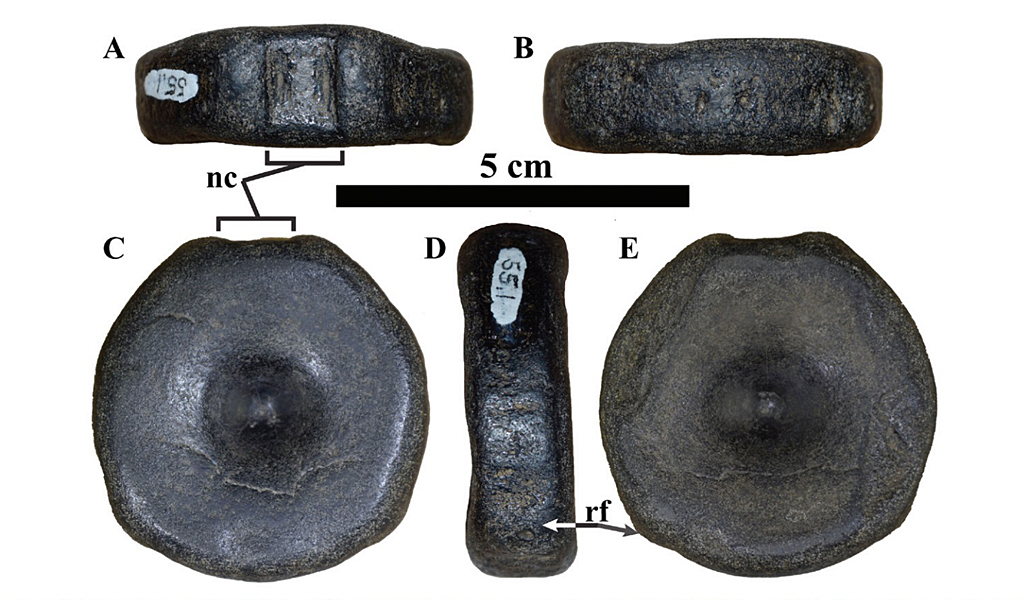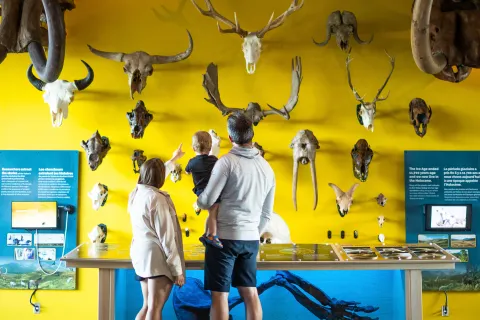- Log in to post comments
December 10, 2013
Yukon is renowned internationally for our amazing fossils of ice age mammals, such as the woolly mammoth and scimitar cat. However, many people often ask, “Did we have dinosaurs in the Yukon, too”? Yes, of course dinosaurs lived in Yukon many millions of years before the Ice Age, but unfortunately, we have not found very many dinosaur fossils here. In fact, to date, only five fossil bones of dinosaurs have ever been discovered in Yukon. These are in addition to the impressive dinosaur footprints preserved in the bedrock near Ross River.
Even rarer than dinosaur bones are the fossils of ancient marine reptiles that swam the seas at the same time dinosaurs roamed the land. In fact, the first fossil of an ancient marine reptile was only discovered in 1998 by a fur trapper named David MacDonald along the Beaver River in far southeast Yukon. Mr. MacDonald found a curious looking “artifact” along the river bank and brought it into Whitehorse for then Yukon Palaeontologist John Storer to examine.
Storer immediately recognized the round, shiny object as a vertebra from an ancient ichthyosaur – a marine reptile that swam the seas during the Mesozoic Era (250 to 65 million years ago), and vaguely resembles a modern-day dolphin. At the time, and based on his early assessment of the geology, Storer thought this dated to the earlier part of the Mesozoic– the Triassic Period around 240 million years ago. However, since Storer had limited experience studying marine fossils, he did not conduct a formal study on the new specimen.
Flash forward to 2010 when palaeontologist James Campbell, a graduate student from Carleton University, was working in partnership with the Geological Survey of Canada and Yukon Geological Survey along the Road River in the remote Peel River region of northern Yukon. While investigating a bedrock outcrop, Campbell found a fossil that he immediately recognized as a vertebra from an ancient marine reptile. After returning the specimen to the laboratory for study, Campbell along with colleagues concluded this fossil represents a vertebra from a plesiosaur that swam the seas during the Cretaceous Period, roughly 110 million years ago. Plesiosaurs are large, long-necked beasts with flippers – think Loch Ness Monster!
After learning of the plesiosaur discovery, Yukon Palaeontologist Grant Zazula got in contact with James Campbell to discuss these fossils. Further examination of the ichthyosaur originally discovered in 1998 revealed that the fossil is much younger than previously thought, roughly of similar age to the Road River plesiosaur found by Campbell. Both the new plesiosaur and the ichthyosaur fossils represent marine reptiles that swam the seas of ancient Yukon, nearly 110 million years ago.
Campbell’s study provides much new information on the life in the ancient sea that once ran through the eastern side of Yukon from the Arctic Ocean into the mid-west of North America.
The results of the study have now been published in the autumn issue of The Canadian Field-Naturalist. The paper describes these two fossils which will reside permanently in Whitehorse as part of the Government of Yukon fossil collections.
The research represents collaboration between the Government of Yukon Palaeontology Program, the Geological Survey of Canada, University of Alaska, Fairbanks, Cleveland Museum of Natural History, and Carleton University. This scientific publication is the first formal scientific report of Yukon’s only-known ancient marine reptile fossils.
Reference: First records of a Plesiosaurian (Reptilia: Sauropterygia) and Ichthyosaur (Reptilia: Ichthyosaria) from Yukon, Canada. James A. Campbell, Schröder-Adams CJ, Haggart JW, Drucken-Miller PS, Ryan MJ, Zazula GD. 2013. The Canadian Field Naturalist, 127: 234-239.
Prepared by:
Grant Zazula,
Yukon Palaeontologist
Yukon Government
December 2013




